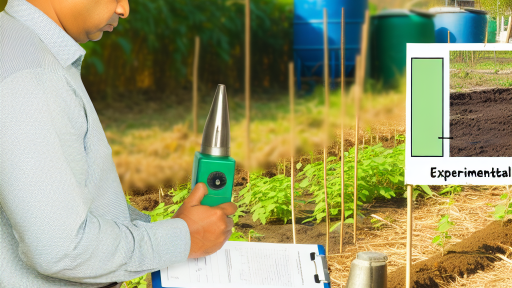Introduction to Farm-to-School Programs and Their Importance
Farm-to-school programs connect local farms with schools.
They provide fresh, healthy food to students.
Additionally, these programs support local economies.
Farm-to-school initiatives enhance student nutrition.
Furthermore, they educate children about food sources.
Benefits of Farm-to-School Programs
Implementing these programs improves student health outcomes.
Research shows that students consume more fruits and vegetables.
It also encourages lifelong healthy eating habits.
Moreover, these programs foster community engagement.
Schools collaborate with local farmers and food producers.
Challenges of Implementing Farm-to-School Programs
Despite their benefits, challenges exist in these initiatives.
One common issue involves funding limitations.
Moreover, logistical barriers can hinder program success.
Schools may struggle with sourcing local products consistently.
Additionally, training staff to implement these programs can be difficult.
Transform Your Agribusiness
Unlock your farm's potential with expert advice tailored to your needs. Get actionable steps that drive real results.
Get StartedStrategies for Success
Developing partnerships can help overcome these challenges.
Schools can collaborate with local organizations and businesses.
Furthermore, seeking grants and funding opportunities is essential.
Providing training and resources for staff can ensure effective implementation.
Engaging the community in advocacy efforts is also beneficial.
Identifying Common Challenges in Farm-to-School Initiatives
Understanding Limited Access to Local Foods
Many schools face challenges sourcing local food products.
Suppliers may lack the infrastructure to deliver fresh produce.
Additionally, transportation costs can deter local growers.
Consequently, schools struggle to establish reliable partnerships.
Navigating Budget Constraints
Budget limitations often hinder the expansion of farm-to-school programs.
Many schools prioritize other educational needs over food sourcing.
Moreover, local foods can sometimes be more expensive than processed options.
As a result, schools may opt for cheaper alternatives.
Addressing Curriculum Integration Issues
Integrating farm-to-school initiatives into curricula presents another challenge.
Teachers may lack training or resources for effective implementation.
Furthermore, aligning food education with state standards can be complex.
Consequently, many schools overlook the educational benefits of local foods.
Overcoming Resistance from Stakeholders
Resistance from parents and community members can obstruct initiatives.
Some individuals may prioritize convenience over nutrition.
Additionally, misconceptions about local food quality can arise.
To address this, schools must engage stakeholders through outreach efforts.
Building Supportive Community Networks
Developing a supportive network within the community is crucial.
Schools must collaborate with local farmers, businesses, and nonprofits.
However, finding common goals among diverse participants is often challenging.
Showcase Your Farming Business
Publish your professional farming services profile on our blog for a one-time fee of $200 and reach a dedicated audience of farmers and agribusiness owners.
Publish Your ProfileEstablishing trust and shared visions can take time and effort.
Strategies for Building Strong Partnerships with Local Farmers
Establish Open Communication
Open communication fosters trust and mutual respect.
Regular meetings can enhance transparency among partners.
Use multiple communication channels for accessibility.
Email updates keep everyone informed about developments.
Encourage farmers to share their challenges and successes.
Engage in Collaborative Planning
Collaborative planning aligns the goals of schools and farmers.
Involve farmers in menu planning for school meals.
Seek input from farmers about seasonal offerings.
This approach promotes local food sources and supports farmers.
Provide Training and Resources
Offering training sessions enhances farmers’ skills.
Workshops can focus on sustainable farming techniques.
Provide information on agricultural grants and resources.
Connecting farmers with agricultural organizations is beneficial.
Showcase Local Products
Highlighting local products builds community pride.
Feature farmers in school events like farmer’s markets.
This exposure can enhance their business visibility.
Organizing farm tours allows students to learn directly.
Strengthen Financial Support
Financial assistance can significantly aid local farmers.
Consider offering grant opportunities for sustainable practices.
Develop funding programs to support large-scale purchases.
Collaborate with local businesses for sponsorship opportunities.
Evaluate and Adapt Strategies
Continuously assess partnership effectiveness and impact.
Request feedback from farmers to improve future collaborations.
Flexibility is necessary to adapt to changing conditions.
Monitor community engagement and food program success.
Delve into the Subject: Harnessing Renewable Energy on Small Farms
Overcoming Budget Constraints
Funding Opportunities
Identifying funding sources is critical for farm-to-school programs.
Grants from the government can significantly alleviate financial burdens.
Local businesses often seek opportunities to sponsor community initiatives.
Forming partnerships with nonprofits can attract additional resources.
Additionally, crowdfunding can engage the community and raise awareness.
However, maintaining transparency with donors builds trust and loyalty.
Resource Allocation Strategies
Strategic resource allocation facilitates program success.
Prioritizing high-impact initiatives can maximize limited funds.
Regular assessments of resource utilization can identify areas for improvement.
Creating a budget that reflects realistic goals is essential.
Engaging stakeholders in the planning process enhances commitment.
Adaptability allows programs to pivot in response to challenges.
Collaboration and Networking
Collaborating with local farmers enhances food supply reliability.
Showcase Your Farming Business
Publish your professional farming services profile on our blog for a one-time fee of $200 and reach a dedicated audience of farmers and agribusiness owners.
Publish Your ProfileNetworking with similar programs fosters knowledge exchange.
Joining coalitions can amplify advocacy efforts for increased funding.
Sharing best practices within networks encourages growth and sustainability.
Moreover, involving parents and communities strengthens program support.
Cost-effective Solutions
Finding cost-effective solutions is crucial for sustainability.
Utilizing volunteer labor can reduce staffing expenses.
Community gardens promote self-sufficiency and reduce food costs.
Seasonal produce purchasing can decrease expenditures significantly.
Incorporating meal planning minimizes waste and optimizes spending.
Finally, leveraging technology can streamline operations and cut costs.
Gain More Insights: Organic Farming Techniques For Sustainability
Addressing Nutritional Education and Awareness among Students
The Importance of Nutritional Education
Nutritional education plays a crucial role in student health.
It empowers students to make informed food choices.
Moreover, it helps combat rising obesity rates among youth.
Strategies for Effective Nutritional Education
Schools can implement various strategies for effective education.
First, integrate nutrition into the curriculum.
This approach makes learning relevant and practical.
Next, provide hands-on cooking classes.
These classes encourage students to explore healthy recipes.
Additionally, involve students in school gardening projects.
This fosters an appreciation for fresh produce.
Enhancing Awareness through Events
Organizing events can significantly boost nutritional awareness.
For instance, schools can host health and wellness fairs.
These events can engage families and community members.
Furthermore, consider incorporating farm-to-school days.
Students can taste local produce and learn about its benefits.
Collaboration with Local Farmers
Forming partnerships with local farmers enhances education.
Farmers can offer insights into sustainable agriculture.
Visiting farms creates tangible learning experiences for students.
Such collaboration helps students understand where their food comes from.
Engaging Parents and Community
Involving parents and the community is essential.
Schools can send newsletters highlighting nutritional tips.
Workshops can also educate parents on healthy meal preparation.
Moreover, local health organizations can provide resources.
These efforts create a supportive environment for student learning.
Discover More: Seasonal Planning Tips for Community Supported Agriculture
Navigating Logistical Issues: Transportation and Distribution
Assessing Transportation Challenges
Transportation remains a critical component of farm-to-school programs.
Many schools struggle to find reliable transportation services.
Weather conditions can disrupt schedules and affect deliveries.
Additionally, fuel costs can vary, impacting budgets significantly.
Showcase Your Farming Business
Publish your professional farming services profile on our blog for a one-time fee of $200 and reach a dedicated audience of farmers and agribusiness owners.
Publish Your ProfileIt is essential to evaluate local transportation providers.
Exploring partnerships with existing logistics companies often yields solutions.
Streamlining Distribution Processes
Efficient distribution is vital for freshness and quality.
Schools can benefit from a coordinated distribution strategy.
Collaborative efforts among schools can optimize delivery routes.
Moreover, establishing dedicated delivery windows enhances efficiency.
Tracking technology can help monitor delivery in real-time.
Training staff on efficient handling processes is also beneficial.
Building Strong Partnerships
Creating strong relationships with local farmers is crucial.
These partnerships can result in better communication and trust.
Farmers can provide timely updates about availability and harvest schedules.
Schools can reciprocate by promoting local products in their menus.
Networking with local businesses strengthens the entire initiative.
Involvement of community organizations can pave the way for collaboration.
Implementing Technology Solutions
Innovative technology can streamline logistical processes.
Utilizing apps for order scheduling aids in efficiency.
Data management tools help in tracking inventory levels accurately.
Cloud-based platforms facilitate communication among all participants.
Moreover, using GPS navigation improves route optimization.
Every advancement reduces delays and enhances overall productivity.
Evaluating and Adjusting Logistics Strategies
Regular assessments of logistic strategies ensure effectiveness.
Gathering feedback from staff and vendors provides valuable insights.
Conducting periodic reviews helps identify inefficiencies.
Adjustments based on these evaluations allow for continuous improvement.
Flexibility to adapt to changing circumstances is essential.
This approach ultimately strengthens farm-to-school programs.
You Might Also Like: Planning Successful Agri-Tourism Events on Your Farm

Incorporating Local Cuisine
Menu Planning and Acceptance
Farm-to-school programs thrive by embracing local cuisine.
Creating a menu that reflects regional flavors fosters engagement.
First, involve local farmers in the menu planning process.
This collaboration helps schools understand what’s available.
Next, consider the preferences of students and staff.
Collect feedback through surveys or focus groups.
Additionally, incorporate culturally relevant dishes.
This approach respects diversity and enhances acceptance.
It’s also essential to provide taste tests before finalizing menus.
Such efforts encourage students to try new foods.
Moreover, educate students about the benefits of local foods.
This education can take place in classroom discussions.
It can also include farm visits to create connections.
Showcase Your Farming Business
Publish your professional farming services profile on our blog for a one-time fee of $200 and reach a dedicated audience of farmers and agribusiness owners.
Publish Your ProfileEngaging stories about the local farmers foster pride.
Furthermore, highlight the nutritional benefits of fresh produce.
Parents often support farm-to-school initiatives as well.
Transparency in sourcing local ingredients builds trust.
Finally, celebrate local food events within schools.
Cooking demonstrations can spark interest in local cuisine.
Through these strategies, schools can encourage broad acceptance.
Leveraging Community Support: Engaging Parents and Educators
Building Strong Partnerships
Engaging parents and educators fosters vital partnerships.
Community support is essential for successful farm-to-school programs.
Schools can collaborate with local farms to create meaningful connections.
These partnerships increase access to fresh produce and educational resources.
Creating Awareness and Interest
Awareness campaigns capture the interest of parents.
Organizing workshops helps parents learn about the program’s benefits.
Schools can distribute newsletters that highlight upcoming events.
Additionally, social media can serve as a powerful tool for outreach.
Involving Parents in Decision-Making
Parents should have a voice in program initiatives.
Advisory committees can provide a platform for parent involvement.
Feedback surveys also encourage parents to share their thoughts.
By including parents, schools can develop tailored programs that reflect community needs.
Encouraging Educator Participation
Educators play a critical role in implementing these programs.
Training sessions equip teachers with the necessary knowledge.
Collaboration among educators enriches the educational experience.
Sharing success stories inspires creative teaching methods.
Building a Supportive Network
Networking with local businesses enhances community involvement.
These businesses can sponsor events or provide resources.
Additionally, local organizations can offer volunteering opportunities.
A supportive environment fosters greater participation and enthusiasm.
Celebrating Success and Milestones
Recognizing achievements boosts community morale.
Schools can host events to celebrate milestones reached.
Sharing success stories in newsletters reinforces community support.
Such celebrations create excitement and encourage ongoing involvement.
Evaluating the Impact of Farm-to-School Programs on Student Health
Overview of Farm-to-School Programs
Farm-to-school programs bridge local farms and schools.
They emphasize fresh, local food in school meals.
These initiatives aim to enhance student nutrition and health.
Additionally, they educate students about food sources.
Benefits for Student Health
Farm-to-school programs significantly improve student dietary choices.
Increased access to fresh produce boosts fruit and vegetable consumption.
This dietary shift can reduce obesity rates among children.
Furthermore, these programs promote healthier eating habits.
Engagement and Education
Students actively participate in gardening and cooking activities.
Showcase Your Farming Business
Publish your professional farming services profile on our blog for a one-time fee of $200 and reach a dedicated audience of farmers and agribusiness owners.
Publish Your ProfileThese hands-on experiences foster a deeper understanding of food.
Moreover, they encourage healthier lifestyle choices outside school.
Educational workshops enhance knowledge about nutrition and wellness.
Addressing Challenges
Implementing farm-to-school programs comes with obstacles.
Funding limitations can hinder access to fresh foods.
Additionally, logistical challenges affect food delivery and storage.
Collaboration between schools and local farms is essential to overcome these issues.
Measuring Impact
Evaluating student health outcomes requires systematic assessment.
Schools can track changes in students’ dietary habits over time.
Surveys and health screenings provide valuable data for analysis.
This information is crucial for refining program strategies.
Future Directions and Sustaining Successful Practices
Emphasizing Collaboration
Future success relies heavily on collaboration among various stakeholders.
Schools, local farmers, and community organizations must work together.
This partnership can address common challenges in farm-to-school programs.
Furthermore, collaboration fosters innovation and resource sharing.
Implementing Educational Initiatives
Education is a crucial component of sustaining farm-to-school efforts.
Programs should equip students with knowledge about local food systems.
They can engage students with hands-on gardening and cooking experiences.
Moreover, these educational initiatives can inspire future generations.
Exploring Funding Opportunities
Secure and diverse funding sources are key to program sustainability.
Schools should explore grants from government and private institutions.
Additionally, partnerships with local businesses can provide financial support.
These funding avenues help sustain and grow successful farm-to-school programs.
Utilizing Technology
Technology plays a significant role in modernizing farm-to-school initiatives.
Schools can use platforms to connect directly with local farmers.
This can streamline ordering processes and logistics of food delivery.
Moreover, data analytics can track program impact and areas for improvement.
Promoting Awareness and Advocacy
Raising awareness is critical for the ongoing success of these programs.
Communications campaigns can educate communities about farm-to-school benefits.
Advocacy efforts can drive policies that support local food systems.
Engaging parents and community members creates widespread support.
Evaluating and Adapting Practices
Regular evaluation ensures program effectiveness and relevance.
Feedback from participants can guide necessary changes and improvements.
Regular assessments can refine operational strategies as needed.
This adaptability strengthens program resilience and impact.
Additional Resources
Growing ‘farm to school’ movement serves up fresh, local produce to …




